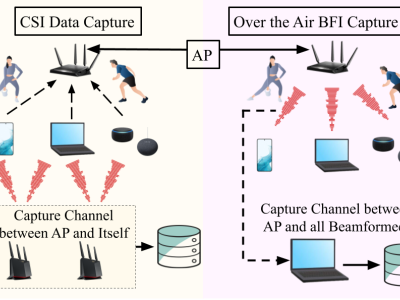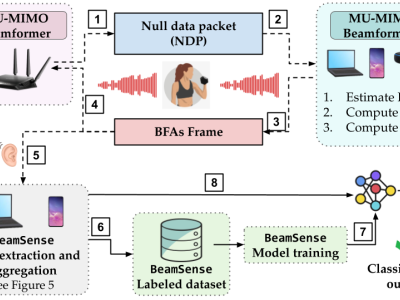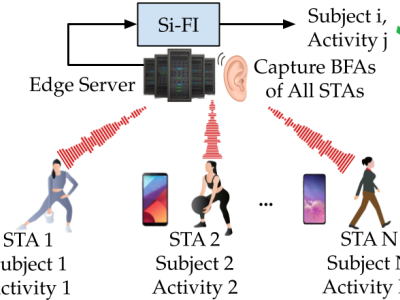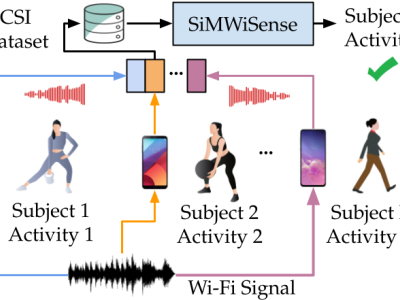CSI-BFI-HAR: Wi-Fi Datasets for Human Activity Recognition

- Citation Author(s):
-
Khandaker Foysal Haque (Northeastern University)
- Submitted by:
- Khandaker Foysal Haque
- Last updated:
- DOI:
- 10.21227/nbp8-7r47
 21 views
21 views
- Categories:
- Keywords:
Abstract
Wi-Fi sensing has emerged as a promising non-intrusive approach for human activity recognition (HAR), leveraging the widespread availability of Wi-Fi-enabled devices. While machine learning tools help extract meaningful features from complex wireless propagation patterns, developing robust and domain-adaptive models remains challenging without diverse datasets. To address this, we release two comprehensive datasets containing Channel State Information (CSI) and Beamforming Feedback Information (BFI), collected using commercial IEEE 802.11ac devices across multiple days in both LoS and NLoS scenarios. The first dataset includes 20 activities performed by six subjects across six setups. The second captures simultaneous multi-subject activities, with three individuals performing distinct actions concurrently. Notably, this is the first public HAR dataset to include corresponding BFI measurements
Instructions:
This dataset supports research on Wi-Fi-based Human Activity Recognition (HAR) using both Channel State Information (CSI) and Beamforming Feedback Information (BFI)—a newly explored and easily collectible sensing primitive. The dataset is captured using commercial IEEE 802.11ac devices in both line-of-sight (LoS) and non-line-of-sight (NLoS) scenarios, across multiple days and environments.
It comprises two subsets:
- Single-subject dataset: Includes 20 distinct activities performed by 6 subjects across 6 different environmental setups.
- Multi-subject dataset: Captures simultaneous activities performed by 3 individuals in coordinated scenarios.
To the best of our knowledge, this is the first public dataset that includes both CSI and BFI traces for HAR applications. The dataset spans approximately 500 GB of CSI and 700 GB of BFI data, offering a rich testbed for developing robust, generalizable, and domain-adaptive sensing algorithms.
For data extraction and pre-processing, refer to the associated repositories:








